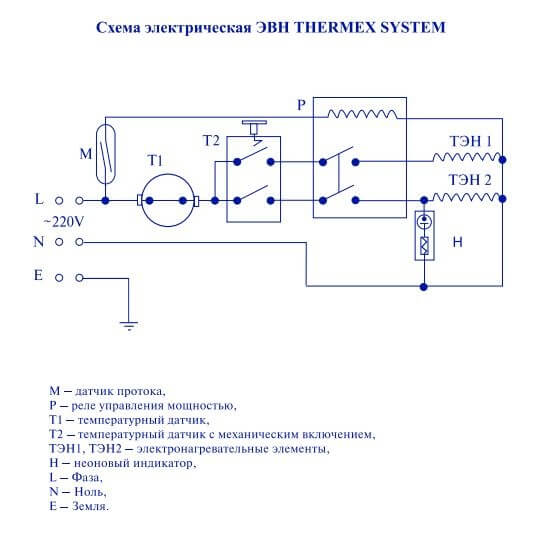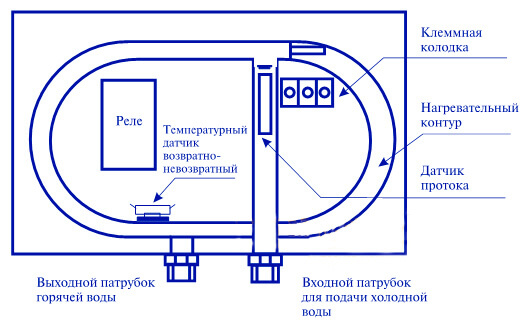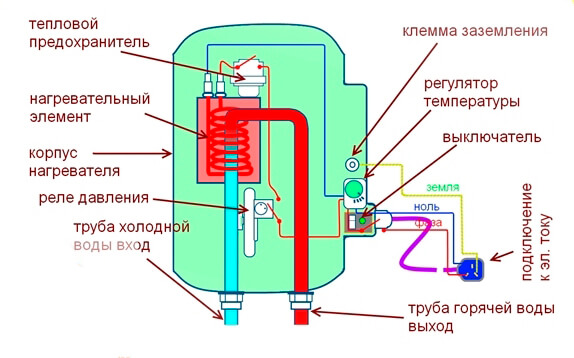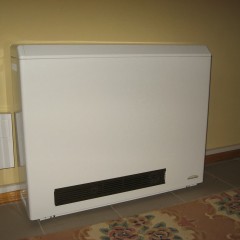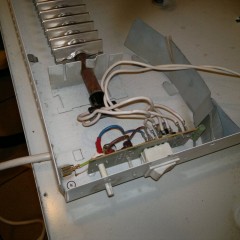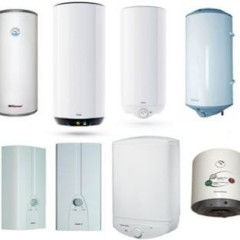How is an instantaneous electric water heater?
How is the water heater arranged?
The flow model differs from the storage boiler in that there is no tank in the design for the accumulation of hot water. Cold water is directly supplied to the heating elements and exits already heated through a mixer or faucet.
Consider the example of a Termex instantaneous water heater device:
As you can see, the electrical circuit of the heater is quite simple. All structural elements can be easily found and purchased if the device fails. Now we turn to the second, no less important issue - consider how the instantaneous water heater works
Operating principle
So, on the example of the heater provided by Termex provided above, we consider its principle of operation.
Connection to the mains is carried out by a three-core cable, where L is the phase, N is zero, and PE or E is grounding. Next, power is supplied to the flow sensor, which is activated and closes the contacts in the event that the water pressure is sufficient for operation. If there is no water or the pressure is very weak, the inclusion of heating will not occur, for safety reasons.
In turn, when the flow sensor is triggered, the power control relay is turned on, which is responsible for turning on the heating elements. Temperature sensors, which are located further in the electrical circuit, are designed to turn off the heating elements during overheating. In this case, the T2 temperature sensor is turned on after the heating elements have cooled in the manual mode. Well, the last structural element is a neon indicator that displays the process of heating water.
That's the whole principle of operation of a flowing electric water heater. If the device suddenly fails, use this circuit to find the faulty item. In other models, there may be a changed operation scheme, for example, a thermostat will be present, as in the image below:
We should also mention the different principle of operation of models with electronic and mechanical control. The first are based on microprocessors and sensors. The mechanical control is a hydraulic unit with a membrane. When cold water is supplied, this membrane moves, thereby pushing the switch lever through a special rod. If the pressure is weak, the displacement will not occur and the heating will not turn on.
Finally, we recommend watching a video in which the design and principle of operation of the devices in question are demonstrated:
So we examined the device and the principle of operation of an electric instantaneous water heater. We hope that now it has become clear to you how this heater is designed and how it works!
It will be useful to read:

